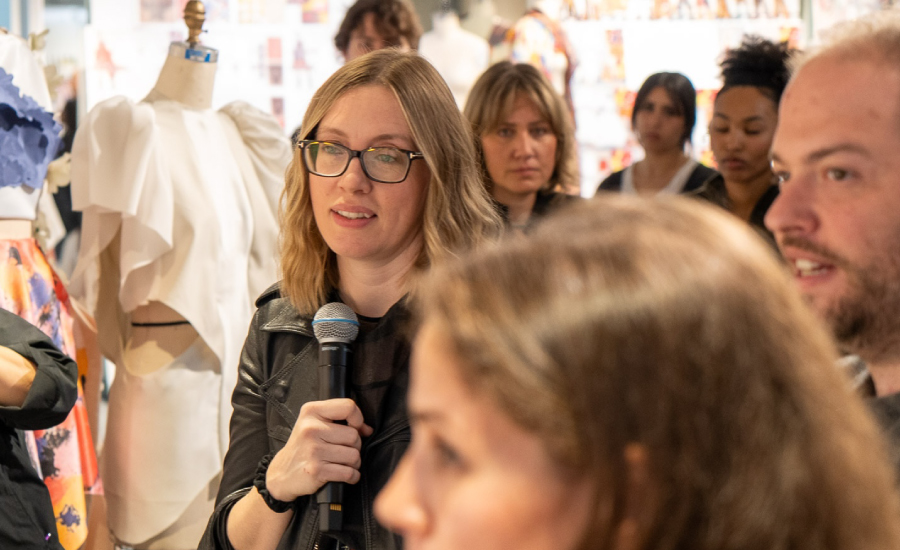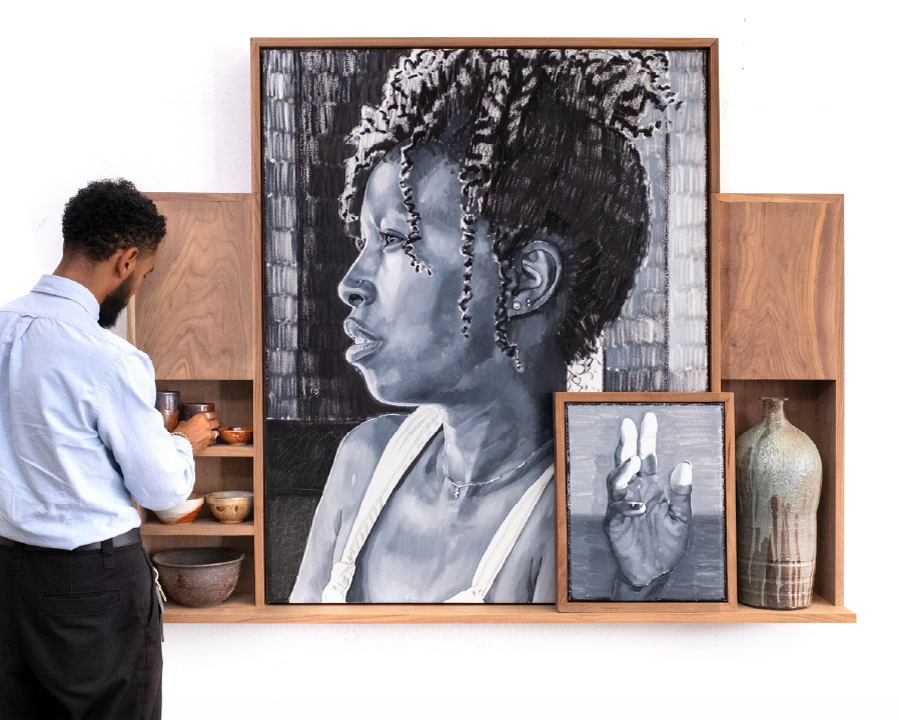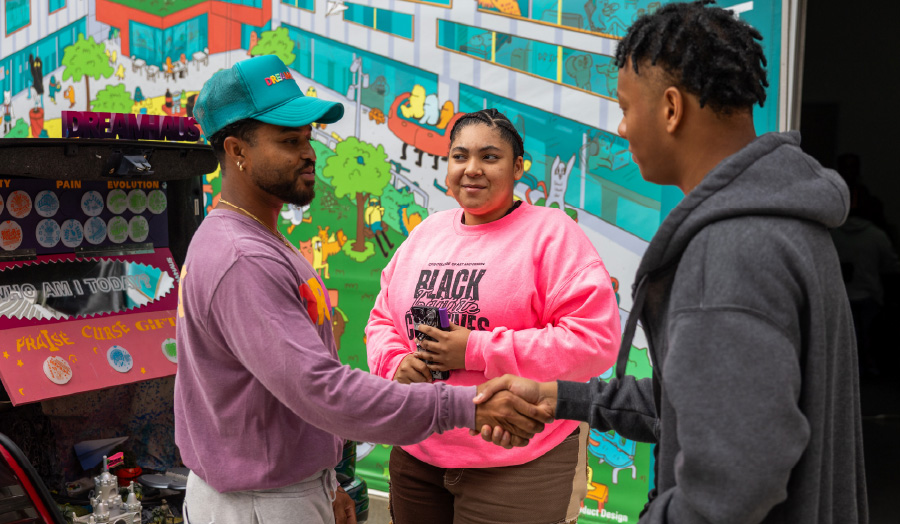Judithe Hernández on Her 50-Year Retrospective at The Cheech
The celebrated artist and alum studied under Charles White and joined classmate Carlos Almaraz in Los Four.
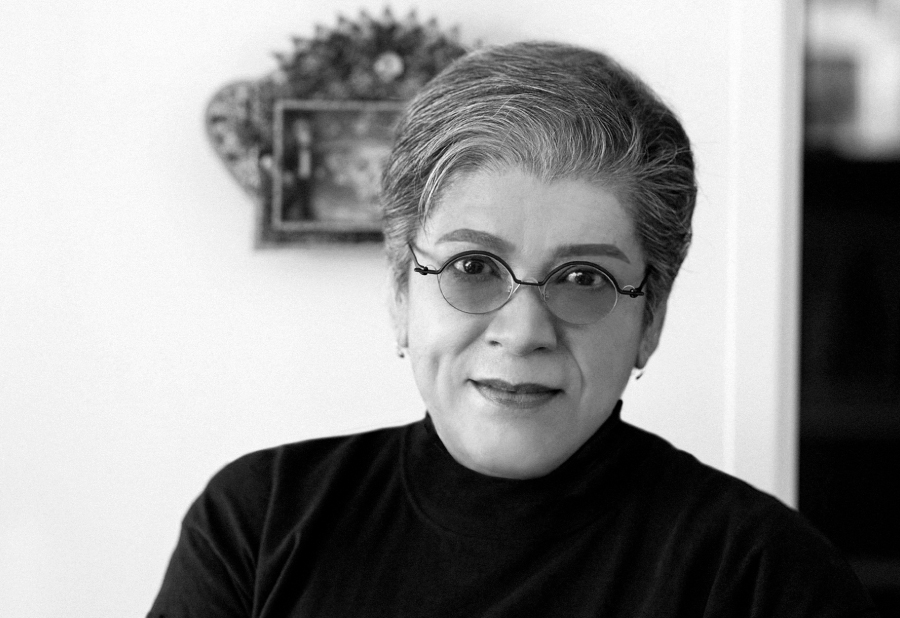
When Judithe Hernández (’72 BFA Fine Arts,’79 MFA Fine Arts) thinks back on her formative years as an artist, there’s a Spanish word that comes to mind: dibujante. The word, she explains, doesn’t quite exist in English. You can be a painter, sculptor, or a photographer, for example, but there isn’t a title for an artist who focuses primarily on drawing as their craft. (The word often is translated to “cartoonist” or “draftsman.”)
Drawing isn’t the only discipline that Hernández works in, but it’s an integral part of who she is as an artist. Her prolific work, which includes paintings, drawings, pastels, and several murals, has cemented her as an important Chicanx voice in contemporary art.
Her pastel works, for which she is perhaps most well known, are bold in their use of color, mythology, and cultural symbols, somehow occupying a space of eerie and surreal energy while seeming familiar and timeless.
The groundwork for Hernández’s career and her arrival at Otis College as an undergraduate in the 1970s began with several significant events in her youth. At Lincoln High School in Lincoln Heights, a primarily Latinx neighborhood just east of downtown Los Angeles, Hernández’s art teacher took her budding talent and passion seriously. Mrs. Howard emptied out “a little storage room” next to her classroom, Hernández recalls, and told her to use it as a studio. The teacher also asked a friend at Otis (then known as the Otis Art Institute) if Hernández could join his Extension courses during the weekend. For the first time, Hernández was able to draw in a room full of other artists, with a live model nearby.
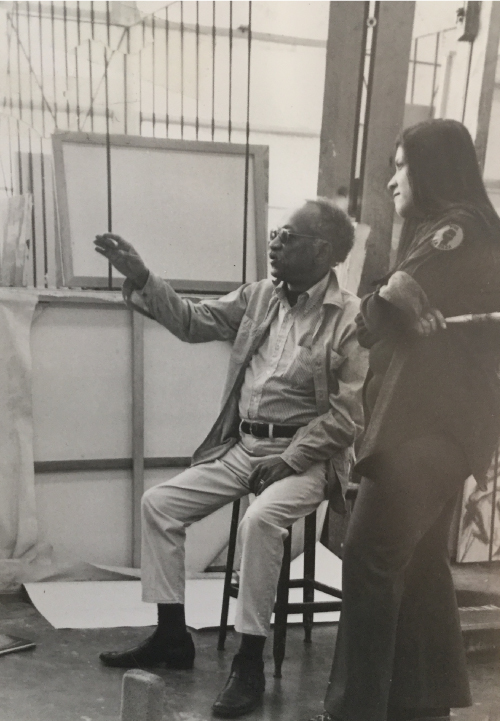
It was such an out-of-body experience to be in a room like how I’d seen in photographs, where you see Picasso and a model. I thought, ‘Wow, this is really what it is like to be an artist.’”
In 1965, her art teacher encouraged her to submit her work to a citywide art competition organized by the Los Angeles County Museum of Art (LACMA). She received the museum’s inaugural Future Masters Scholarship and used the funds to enroll at Otis.
The next decade proved transformative. On August 29, 1970, thousands of Chicanx people gathered in East Los Angeles to protest as part of the National Chicano Moratorium Against the Vietnam War. Hernández planned on attending the rally but everything quickly became chaotic and she and her friends turned around, avoiding a violent event during which three people were killed. Carolina Miranda wrote in the Los Angeles Times that the Moratorium “marked a transformational moment for art in Los Angeles” and “fueled an urgency to make visible the Chicano experience,” something that Hernández echoes in her reflections on the 1970s.
“The entire decade was filled with all these historic things that happened and all these choices that people had to make,” Hernández says. “The people in society who had not been allowed to move forward, for all the awful reasons that American society has dealt with ever since its founding, rose up.”
While a student at Otis, Hernández found an important mentor and guide in instructor Charles White, who shared her love of drawing and encouraged her to incorporate social issues into her practice. White studied and admired the work of such muralists as David Alfaro Siquieros and Diego Rivera, and he prompted Hernández to channel Chicanx culture and political struggles in her work.
“That was an exhilarating thing to find out—that this is really what I was meant to do with the abilities I had,” says Hernández. “If that did not happen to me maybe I’d be doing abstract art.”
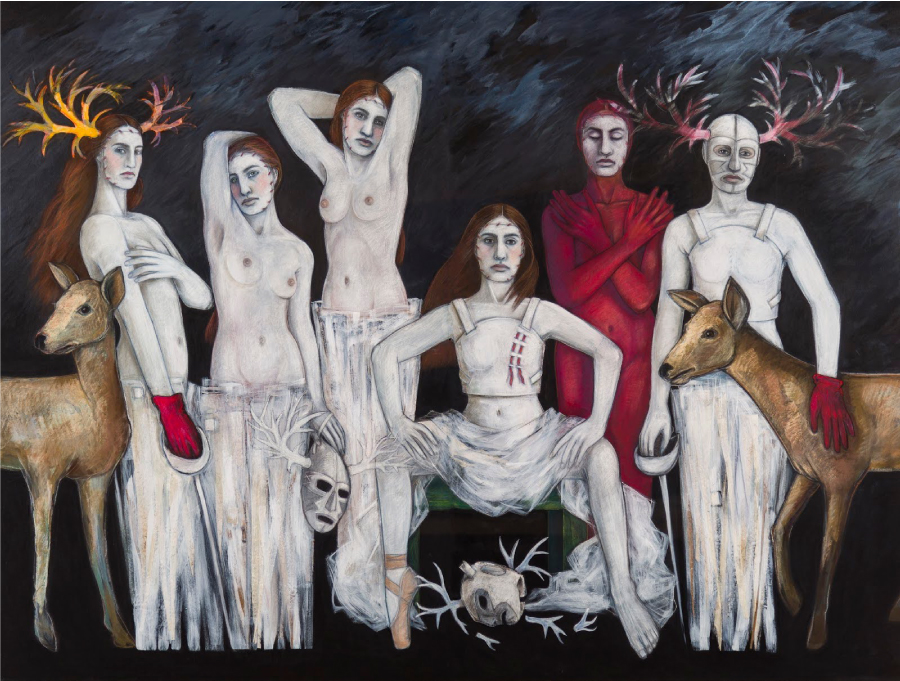
Another important person at Otis who influenced her artistic journey was fellow student
Carlos Almaraz (’74 MFA Fine Arts). In 1974, Hernández joined Almaraz in Los Four—an artist collective that also included Frank Romero, Robert “Beto” de la Rocha,
and Gilbert Lujan—who pushed for Latinx work to be taken seriously and had a huge
impact on Chicanx and Latinx artists. Hernández joined the group as a fifth member
(though they kept their original name), a decision that nourished her artistic process
but also taught her “to find and hold my place” amidst four male artists.
Los Four was active during a significant time for mural art in Los Angeles. Dr. Judith F. Baca, an artist, activist, and the founder of the Social and Public Art Resource Center (SPARC), wrote that murals “forged a strong visual presence of a people who [in the late 1960s and early 1970s] lacked representation in public life, with neither voice in elections, nor elected representatives.”
In 1977, in collaboration with Almaraz, Hernández produced Homenaje a las Mujeres de Aztlán, a mural in the Ramona Gardens Housing Projects in the Boyle Heights neighborhood of Los Angeles that pays tribute to the significance of women from ancient to modern times. Hernández and Almaraz wanted to create something that veered away from the male-heavy, Chicanx murals of the time.
By the 1980s, Hernández cemented her place in the art world through exhibitions that introduced her work to audiences beyond the West Coast. In a full circle moment, she also became an educator, teaching for three decades at UC Santa Barbara, California State University Long Beach, and East Los Angeles College. Her creative work continued to reach new audiences, both through institutional shows and public art projects, including a seven-story mural completed in 2019 at the La Plaza Village apartment complex near Olvera Street in downtown Los Angeles. In 2021, she received an Anonymous Was a Woman Grant, alongside artists Coco Fusco, Dyani White Hawk, and Suzanne Jackson.
Today, five decades of Hernández’s work are on view in an exhibition titled Beyond Myself, Somewhere, I Wait for My Arrival, a line from a poem by Octavio Paz. The show at the The Cheech Marin Center for Chicano Art & Culture of the Riverside Art Museum (aka “The Cheech”), which runs through August 4, 2024, includes a few recurring themes in Hernández’s practice: Indigenous and Mexican culture, mythology, colonialism, magical realism, as well as violence against women and homages to female figures both real and imagined. When The Cheech opened in 2022, with several of Hernández’s pieces on view amongst others by Latinx artists, Hernández told Otis College that the moment felt significant both for artists and future scholars.

Now, she says it feels surreal to see so much of her work in one place. “One of the things that life has given me, which it doesn’t give everyone, is time,” Hernández says. “When you look back at 50 years of what you’ve done, it’s a little like an out-of-body experience. It’s like you’re looking at somebody else’s work …
One of the things that has always fueled my interest and the engine that really keeps me working is the fact that I’m really never satisfied with what I do."
Although her journey started decades ago, Hernández says she won’t run out of social issues to weave into her work. She already has some new pieces on her easel, fueled by what’s happening in the world today and how little has changed.
“I’ll never have a loss of content that I could address … I’ll be doing this until they pull the pastel out of my hand,” she says. “Because it’s what I do.”
Hernández’s retrospective at The Cheech, Beyond Myself, Somewhere, I Wait for My Arrival, is on view through August 4, 2024. More information.
Hear Hernández and other Otis alums talk about studying under Charles White:
